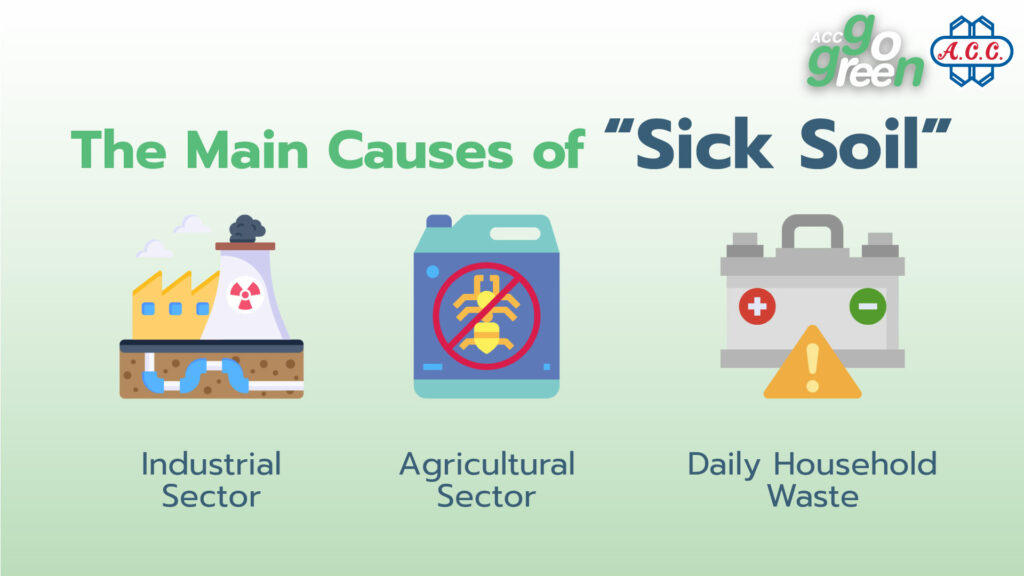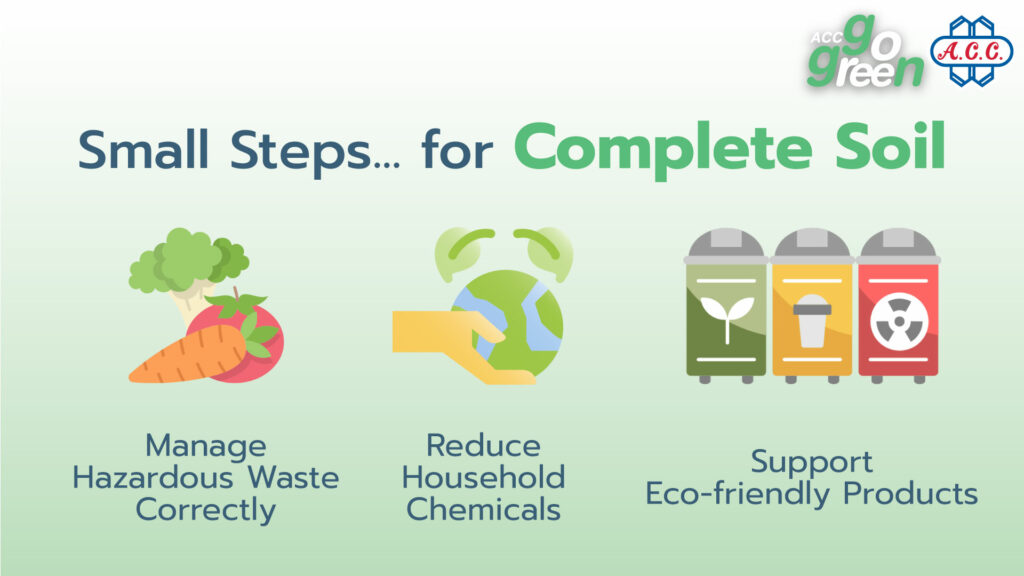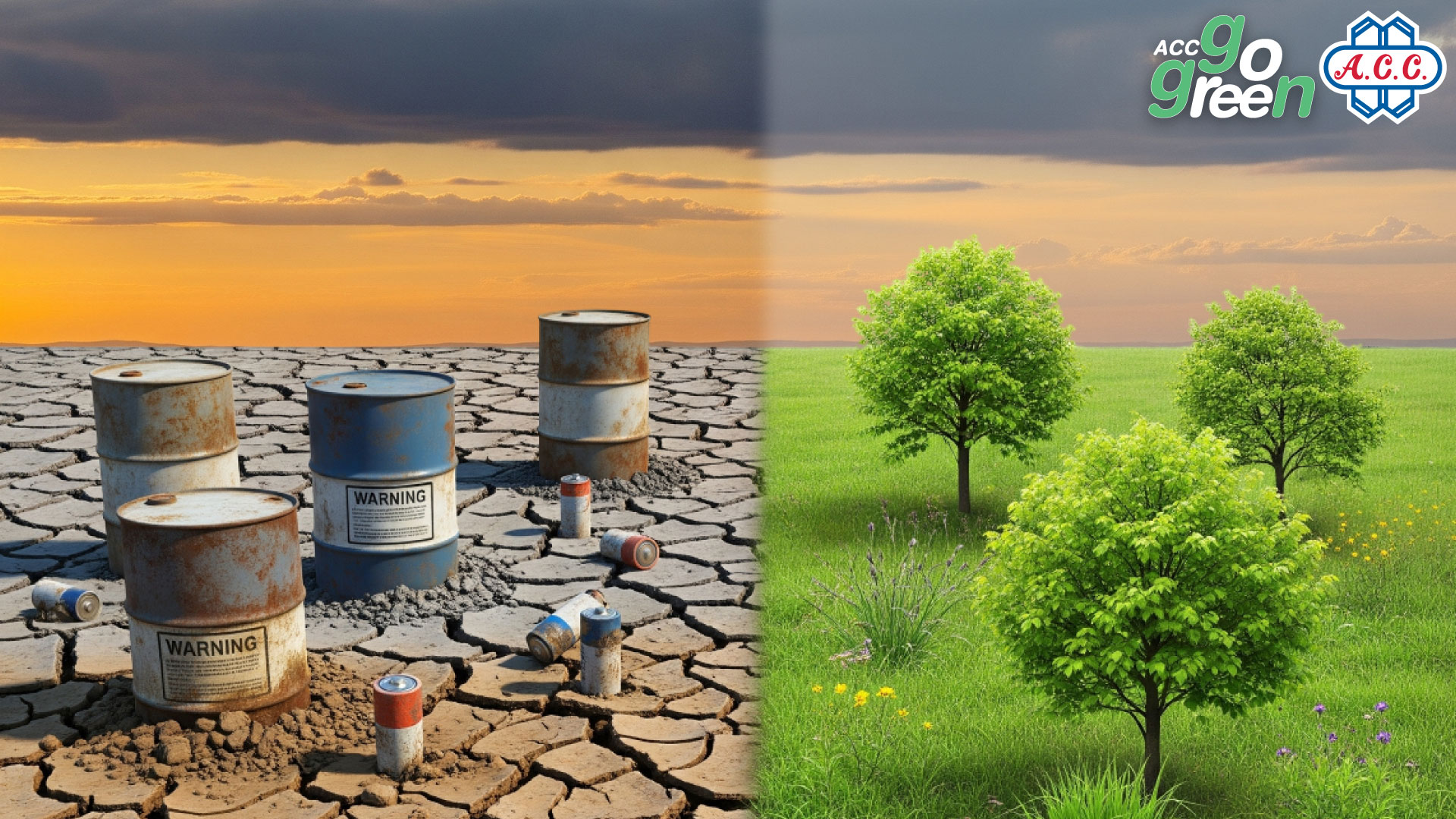Have you ever wondered why we call our planet the “Blue Planet”? That’s because 70% of the Earth’s surface is covered in water. But while we focus on the oceans and bodies of water, we often forget about the “land,” which is the crucial foundation for all life on our planet. It’s not just a place for us to stand or grow crops; it’s a vast ecosystem teeming with countless tiny organisms, a food source for land-based creatures, and a filter for water that flows into groundwater sources.
But today, the land is facing a serious threat: “soil contamination.” It’s a problem that we may not see with our bare eyes, but it quietly impacts the environment, the food chain, and the health of all of us. This article will invite you to get a deeper understanding of the issue of contaminated soil and explore solutions that can help restore the land to its abundant state once more.
What is Contaminated Soil? And What Substances Cause the Problem?
Contaminated soil is a condition where the land accumulates various hazardous substances in quantities that exceed the natural, safe level. These substances can be in solid, liquid, or gas forms and don’t just affect soil quality; they can also spread to groundwater and the air.
Common contaminants can be divided into several groups:
∘ Heavy Metals: Such as arsenic, lead, mercury, and cadmium. These substances often come from electronic waste, industrial factories, or mines. Once they enter the soil, they are very difficult to break down and can accumulate in living organisms.
∘ Organic Chemicals: Such as pesticides, insecticides, gasoline, and various solvents. These substances may come from agricultural activities or spills from factories. Some of them can evaporate into the air, and some can remain in the soil for a long time.
∘ Industrial Waste: Waste from manufacturing processes, such as sludge, chemical residue, or improperly discarded solvents, which may contain a combination of many hazardous substances.

Soil Main Causes
What are the Main Causes of Soil Contamination?
Soil contamination doesn’t occur naturally; it is mostly a result of human activities, both on a large scale and in daily life. The main causes can be divided as follows:
∘ The Industrial Sector: The growth of industrial factories generates a large amount of waste. If there is a lack of a good management system, this waste will be dumped directly into the soil or will leak from substandard chemical storage tanks, which is a key reason for widespread soil contamination.
∘ The Agricultural Sector: Unsustainable agriculture, such as the excessive and continuous use of chemical fertilizers and insecticides over a long period. These chemicals will remain and accumulate in the soil, affecting the ecosystem in the long term.
∘ Daily Household Waste: Some household items are a surprising source of contaminants, such as old batteries thrown away with regular trash, oil leaking from cars, or even certain cleaning agents poured directly onto the ground.
How Does Sick Soil Affect Life?
Contaminated soil is not just a problem for one specific area; it can have a chain reaction impact on all life on Earth. The effects can be divided into three main levels:
∘ Impact on the Environment: Contaminants in the soil destroy beneficial microorganisms and soil-dwelling organisms, which are the heart of its fertility. This prevents plants from growing well. Additionally, toxins can be washed by rain into groundwater, rivers, and the sea, contaminating surrounding water sources.
∘ Impact on the Food Chain: When plants absorb contaminants into their stems and produce, the toxins immediately enter the food chain. When animals eat these plants, or when humans consume the contaminated plants and animals, the toxins accumulate in the body and can cause a variety of diseases.
∘ Direct Impact on Human Health: Direct contact with contaminated soil, inhaling dust with toxins, or drinking water from contaminated groundwater sources are all risk factors that can cause humans to become sick from toxins in the long term.
How Can We Rehabilitate Contaminated Soil?
Solving the problem of soil contamination requires cooperation from all sectors and the use of scientific knowledge to find the most suitable methods. The solutions can be divided into several levels:
∘ Individual Actions: Start with small steps that everyone can take, such as properly managing hazardous household waste, reducing the use of chemicals in vegetable and fruit gardens, and choosing environmentally friendly products.
∘ Technological Rehabilitation: There are several scientific methods used to treat contaminated soil, such as:
∘ Bioremediation: Using microorganisms that are effective at breaking down contaminants.
∘ Phytoremediation: Using plants that can absorb contaminants from the soil and accumulate them in their stems and leaves.
∘ Chemical Treatment: Using specific chemicals to stabilize contaminants in a harmless form or to eliminate certain contaminants. This is a highly effective method and a crucial solution for addressing problems at the industrial level.
Everyone Has an Important Role in Rehabilitating the Land
Even though soil contamination seems like a major issue that requires the cooperation of many parties, in reality, every single person has an important role in helping to restore and protect the land. Starting with awareness and taking action in daily life is a huge and powerful first step.
You can be a part of the change by doing simple things like this:
∘ Manage hazardous waste correctly: Batteries, light bulbs, or household chemicals should be separated and disposed of at designated hazardous waste collection points to prevent these toxins from leaking into the soil and water.
∘ Reduce the use of household chemicals: Switch to cleaning products or pest control that use more natural ingredients.
∘ Support environmentally friendly products: Choose to buy products from organizations that clearly demonstrate a responsibility towards the environment.

Soil Action
Conclusion
Soil contamination is a problem closer to us than we think and affects everyone in our food chain. Understanding the root causes and learning about the solutions is the most important first step in taking care of our world together. Abundant soil is the foundation of food security and a good quality of life.
Starting with proper daily waste management and being aware of sustainable resource use is an expression of our shared responsibility to pass on healthy land to our children in the future.



